Get Strong with Compound Exercises
Compound exercises are the backbone of strength training. Compound exercises are exercises that target multiple muscle groups and joints at the same time, unlike an isolation exercise which focuses on only one.
One study shows that individuals who used compound exercises saw an 11.3% decrease in body fat, while those who used isolation exercises saw only a 6.5% reduction in the same period of time (Paoli et al., 2017). This is just one of the many studies backing these great movements.
Compound exercises are amazing for building overall strength and are needed in all workout routines. Before we get to the 10 best compound exercises you can incorporate into your routine, let’s go over the benefits of them first.
Some Benefits of Compound Exercises
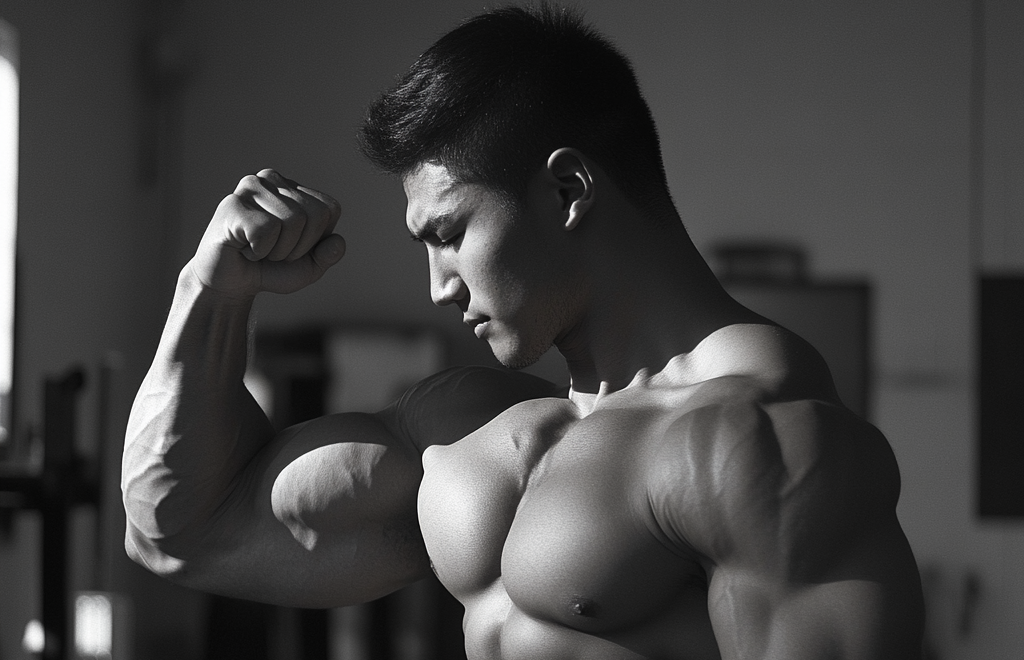
Compound exercises can bring benefits to your gym routine that isolation exercises simply cannot. Here are a few:
- Time-Saver: Compound exercises allow you to save time at the gym because they give you the ability to workout multiple body parts at once.
- Enhanced Muscle Growth: Since multiple muscles will be working at the same time, more muscle fibers will be moving. This will lead to an enhanced muscle and strength growth.
- Paoli’s study showed that the compound exercise group increased muscle mass by 5.5%, compared to 3.5% of the isolation group group (Paoli et al., 2017).
- Functional Strength: Everyday movements do not simply use one muscle group, but rather many. Think of carrying the groceries, or taking part in sports. Compound movements will give you the strength for everyday movements like this.
- Higher Caloric Burn: Compound exercises burn more calories both during and after your workout. They raise your heart rate and will help you lose weight if that is your goal.
- Muscle Balance: If you were to only do isolation movements, it is easy to build some muscles more than others. Compound movements gives a balance to whole body muscle mass and strength building.
- Hormone Boost: Compound exercises help trigger the release of muscle-building hormones like testosterone. The more of these hormones, the more muscle that is built.
To get the most out of these exercises, maintaining proper the form is key. Without proper form, the exercises are not as effective as they should be.
Top 10 Must-Do Compound Exercises in 2024
Now that you know the benefits of these kinds of exercises, it’s time to get into the best ones for you to add to your routine in 2024. These 10 are the game-changers.
1. Squats
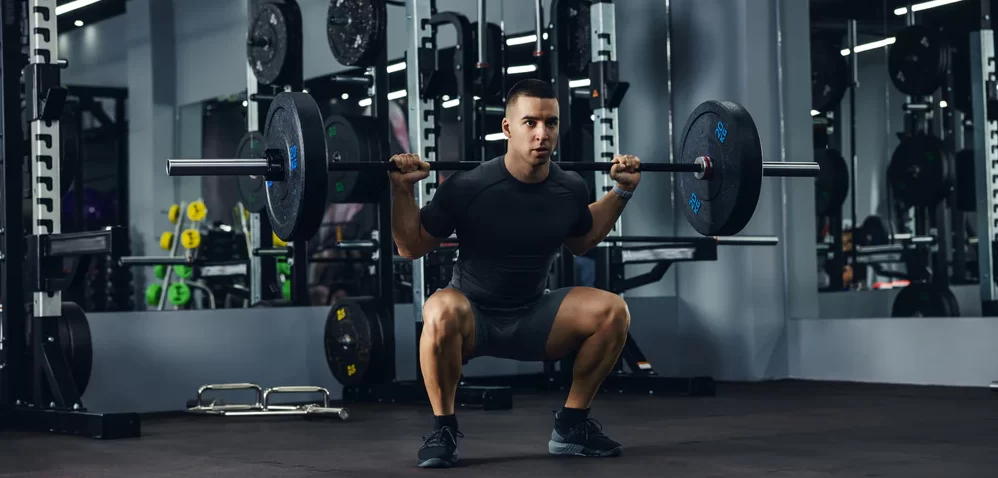
The most effective, and most well-known of the lower body exercises: the squat. You can do squats with just your body weight, with a barbell, dumbbells, or kettlebells.
How to:
- Stand with your legs shoulder-width apart.
- Keep your knees just past your toes and your back straight
- Squat down as if sitting in a chair until your legs form a 90 degree angle
- Stand back up to the starting position
Muscles Worked:
- Quads
- Hamstrings
- Glutes
- Core
For more, check out our guide on perfecting your squat form.
2. Deadlifts
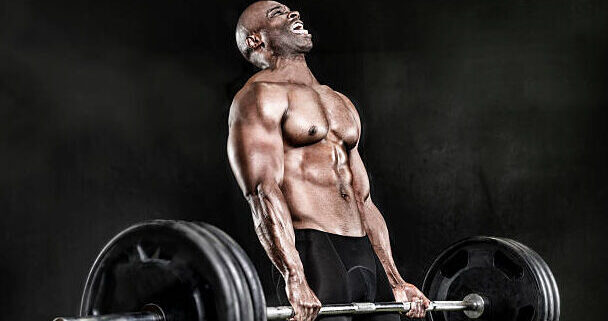
Deadlifts are a powerhouse compound exercise that benefits many parts of your backside. They are an amazing strength builder and help functional strength greatly. You can do deadlifts with a barbell, dumbbells or kettlebells.
How to:
- Stand feet shoulder-width apart, and your toes under the barbell or dumbbells.
- Bend at the hips and knees, keep your back straight and chest up, and grip the bar with both hands just outside your knees.
- Push through your heels to lift the bar, and stand up straight.
- Fully extend your hips and knees at the top
- Reverse the motion and lower the bar back to the ground.
Muscles Worked:
- Lower Back (Erector Spinae)
- Hamstrings
- Glutes
- Core
- Trapezius
- Quads
3. Bench Press
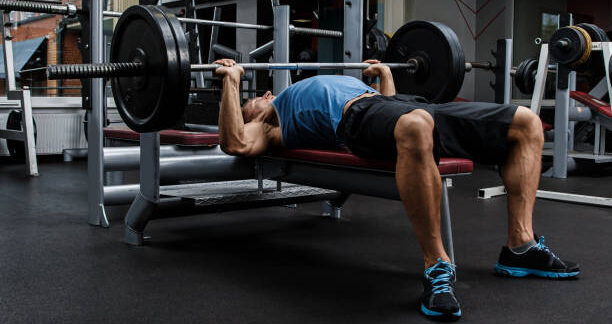
The bench press is the most commonly done upper body exercise. It is amazing for not just the chest, but the shoulders and triceps too. You can decide between barbell and dumbbells, but this exercise is a must for strength training.
How to:
- Lie on a bench with your feet planted on the ground.
- Grip the barbell slightly wider than shoulder-width apart.
- Lower the weight to your mid-chest.
- Press the weight back up to the starting position, fully extending your arms.
Muscles Worked:
- Chest
- Triceps
- Shoulders
4. Pull-Ups

Pull-ups can be hard, but they are amazing for building muscle and improving posture. You can start with an assisted pull-up machine if needed, and then work to a regular pull-up bar.
How to:
- Grip a pull-up bar with your hands slightly wider than shoulder-width apart, with your palms facing away from you .
- Hang from the bar with your arms fully extended.
- Pull your body upward until your chin is above the bar, and squeeze your shoulder blades together.
- Lower yourself back to the starting position with control.
Muscles Worked:
- Latissimus Dorsi (Lats)
- Biceps
- Rhomboids
- Trapezius
- Rear Deltoids
5. Bent-Over Rows

Bent-over rows are a top tier back exercise that also works your arms and your core. These will rapidly increase your strength, but you must be sure to do them with the right form. You can do these with a barbell, dumbbells, or a resistance band.
How to:
- Stand with your feet shoulder-width apart and hold the weight with an overhand grip.
- Bend at the hips, keeping your back straight and your knees slightly bent, until your torso is almost parallel to the ground.
- Pull the weight towards your lower rib cage, squeezing your shoulder blades together at the top.
- Lower the weight back to the starting position slowly.
Muscles Worked:
- Latissimus Dorsi (Lats)
- Rhomboids
- Trapezius
- Biceps
- Rear Deltoids
6. Overhead Press

The overhead press is a fundamental upper body exercise that is necessary in any strength training routine. It is great for both shoulder strength and stability. You can use a barbell or dumbbells for these, but I’d recommend dumbbells as you can sit down and make sure you keep proper form.
How to:
- Stand (or sit) with your feet shoulder-width apart and hold the weight at shoulder height, with your palms facing forward.
- Engage your core and press the weight over your head until your arms are fully extended.
- Lower the weight back down to shoulder height with control.
Muscles Worked:
- Shoulders
- Triceps
- Upper Chest
- Trapezius
- Core
7. Lunges

Lunges are a great lower body exercise for strength, stability and balance. These can be done with your body weight, dumbbells, a barbell, or kettlebells, which allows you to pick which you like best and gain the most from.
How to:
- Stand with your feet hip-width apart.
- Step forward with one leg, lowering your hips until both knees are bent at a 90-degree angle.
- Make sure your front knee is directly above your ankle, and your back knee is just above the ground.
- Push through your front heel and return to the starting position
- Repeat on the other leg.
Muscles Worked:
- Quads
- Hamstrings
- Glutes
- Calves
8. Dips

One of my all-time favorites, dips are a foundational upper body exercise. Like pull-ups, these are a bit difficult at first, so if you need to use the assisted machine first, do it! You can do dips on a dip machine, parallel bars, or a bench or chair.
How to:
- Position yourself on parallel bars with your arms fully extended and shoulders over your hands.
- Lower your body by bending your elbows, keeping them close to your body, until your upper arms are parallel to the ground.
- Push yourself back up to the starting position, fully extending your arms.
Muscles Worked:
- Triceps
- Chest
- Shoulders
- Core
9. Push-Ups
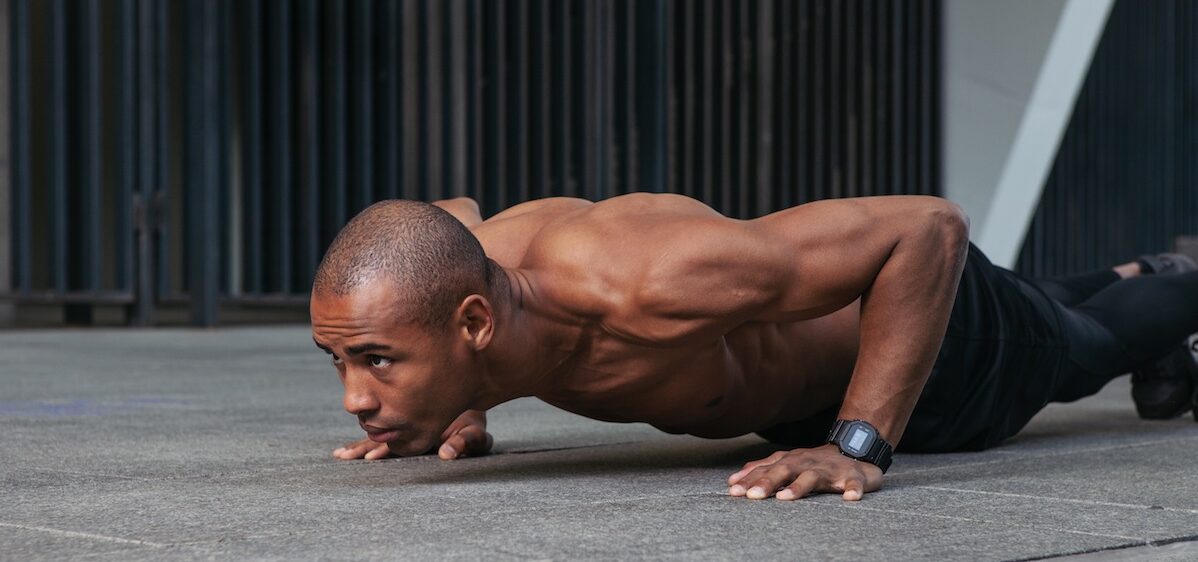
One of the easiest and most effective exercises to ever exist, the push-ups are a staple for the upper body. They are versatile and can be done almost anymore. You can mix in a million different kinds of push-ups including incline, decline, superman, close-grip, and a whole lot more.
How to:
- Start in a plank position with your hands slightly wider than shoulder-width apart.
- Lower your body until your chest hovers above the ground, keeping your body in a straight line.
- Push yourself back up to the starting position.
Muscles Worked:
- Chest
- Triceps
- Shoulders
- Core
10. Planks
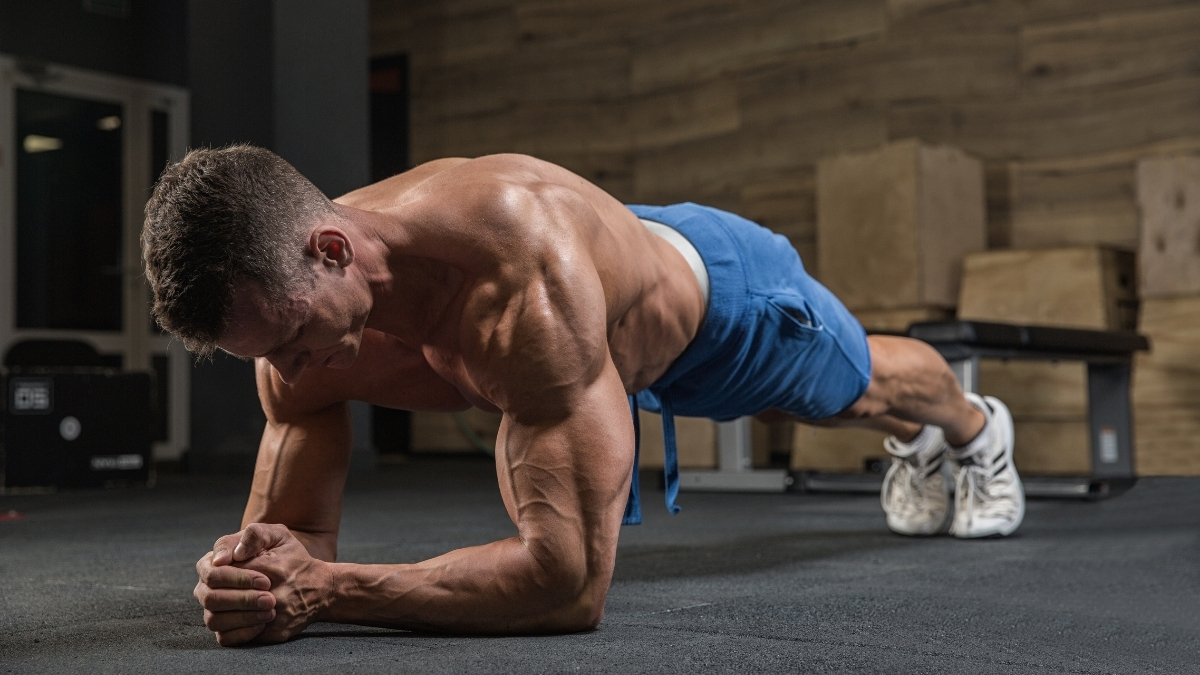
Planks are the most simple exercise on the list, but they’re a full-body workout. This is the most common core exercise and can be added to any workout at the beginning or the end to help build that oh so important core strength.
For more core exercises, check out our article on core strength exercises.
How to:
- Start in a forearm plank position with your elbows under your shoulders and your body in a straight line.
- Engage your core and hold this position, keeping your hips level and your back flat.
- Breathe slowly and hold this position for as long as possible.
Muscles Worked:
- Core
- Shoulders
- Lower Back
- Glutes
These 10 compound exercises can help you build overall body strength in your routine. For all of these exercises, good form is crucial. Gradually increase the weights as you work along, and always listen to your body to avoid injury.
How to Add Compound Exercises to Your Routine
Before adding compound exercises to your workout routine, you need to know how. So let’s go over how often to do them, how many reps to aim for, and then some tips on maintaining your form.
How Often and How Many Reps
When adding compound exercises to your workouts, balance is key. Aim for 2 to 3 times a week, with at least a day off in between. This gives your muscles time to chill and get stronger.
For reps, shoot for 6 to 12 per set. This range at a moderate intensity (60-80% of 1RM), along with short rest periods, have proven to be the best for muscle growth (Krzysztofik et al., 2019). Start with a weight that feels tough but doable within this range, and bump it up as you get stronger. Need more details on rep ranges? Check out our rep ranges for strength guide.
Listen to your body. Adjust how often and how many reps you do based on how you’re feeling and your goals. If you’re new to this, consider getting some advice from a pro or looking into strength training for beginners.
Tips for Perfect Form

Good form is everything with compound exercises. Here’s how to do them right and avoid getting hurt:
- Warm Up First: Do some dynamic stretches and light cardio to get your blood pumping and muscles ready. This will prepare your body for the workout.
- Keep Good Posture: Focus on keeping your core tight, your shoulders back, and your spine neutral. This helps spread the pressure from the weight evenly and will keep you from getting hurt.
- Use a Full Range of Motion: Go through the full range of motion for each exercise. This makes sure you’re hitting the right muscles and to their full extent. But don’t sacrifice good form just to go deeper. Always prioritize doing it right first or else you’ll end up hurt.
- Breathe Right: Inhaling when you lower the weight and exhaling when you lift it will help you keep stable and make sure your technique is solid. For more on this, see our article on breathing techniques for lifting.
- Start Light: Start with lighter weight and focus on form. Once you can successfully do that weight, add more, but only if you can do more with that same correct form. Never let your ego risk bad form and injury.
By focusing on these key components of doing compound exercises, you’ll get the most out of your strength training. Always put safety first and don’t hesitate to get more advice if you need it.
Extra Tips for Doing Compound Exercises
Let’s talk about some tips and tricks to maximize the benefits of compound lifts. It’s all about pushing your limits and mixing things up to keep your muscles guessing.
Slowly Adding More Weight

Using the progressive overload principle, we know that to keep getting stronger and building more muscle, you have to keep adding weight, reps, sets overtime. I don’t mean all at once, but slowly over time. Your body adapts to the same old routine, meaning it cannot be shocked and therefore cannot be broken down, which is necessary to make gains!
This means adding more weight to your barbell, dumbbells, or whatever gear you’re using will make a difference. One study done showed that progressive overload increased back muscle size by 14% and a chest muscle size by 12% (Geanta & Ardelean, 2021).
Once again, bad form will actually halt your progress, so you cannot do this so fat. Add weight little by little, making sure you can still the exercise with perfect form. No one wants to end up hurt.
My favorite way to go about this is by logging your lifts. Keep a journal or some kind of tracker that logs all your workouts with exact weight, sets and reps. This way you can always aim higher and you can see your progress overtime. Having goals and pushing limits is what makes strength training so great.
Mixing It Up
Adding more weight is just one way to change things up and shock the muscles. If you want to avoid hitting a plateau, here are some other tricks:
- Switch Up the Exercises: Try different versions of your go-to moves. For example, swap out regular squats for front squats or goblet squats. Or, switch from flat bench press to incline bench press. Using new exercises to hit new angles and keep things fresh will allow you to optimize your strength gains and keep your muscles guessing.
- Change Your Reps: Play around with your rep ranges. Go for lower reps (3-5) to build strength and higher reps (10+) for muscle endurance and growth. You can go somewhere in between to try to get both strength and muscle gains. Either way, mixing up the ranges every now and then will keep your muscles growing.
- Advanced Moves: Once you’ve nailed the basics, try advanced techniques like supersets, drop sets, or pyramid sets. These ramp up the intensity and challenge your muscles in new ways. Just make sure you’ve got the basics down first.
It’s important to push yourself, but not so hard that you get hurt or burn out. If you’re not sure how to progress or mix things up, consult someone who may be more knowledgable than you.
Safety Tips and Precautions

Whenever lifting weights, put aside the want of big muscles and new PRs for the safety of your own body. That is most important.
Here are some key tips to keep you injury-free and make your workouts more effective:
Listen to Your Body
Your body knows best. If you feel pain, discomfort, or anything weird, stop immediately. Ignoring signs of discomfort can lead to serious injuries and will 100% set you back. Always maintain proper form and technique, and adjust your form if anything does not feel right.
Warm Up and Cool Down
Don’t jump straight into heavy lifting. Warm up your muscles first. This gets your blood flowing, improves flexibility, and lowers the risk of injury. Try dynamic stretches or light cardio like jogging to get your heart rate up and prepare your muscles for the workload to come. I love walking on incline or riding the stationary bike to warm myself up.
According to Fradkin, Zazryn, and Smoliga (2010), warming up improved performance in almost 80% of the tasks completed by individuals in their study. This shows the clear benefits of warming up for any physical activity.
After your workout, cooling down is equally important. It helps your body return to normal and reduces muscle soreness. Things like static stretches, gentle movements, getting in the sauna, will all help your muscles relax and speed up recovery.
Seek Professional Help
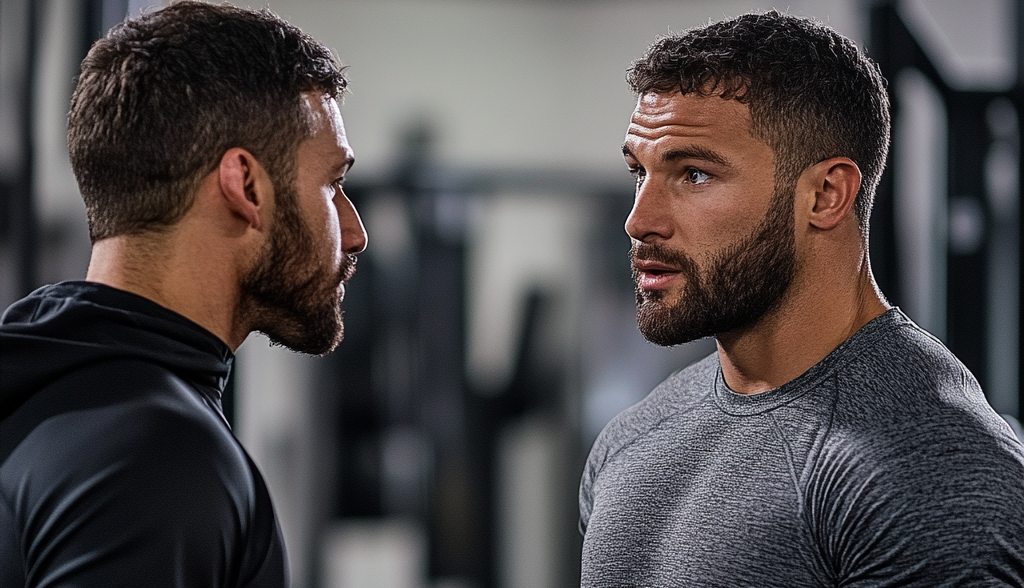
If you’re new to strength training or have specific concerns, it’s never a bad idea to get some professional advice. A certified trainer likely knows a bit more than you, so utilize them! They can help you with form, workout plans, setting goals, etc. they are amazing resources for helping you achieve your strength training gains.
By taking these precautions, listening to your body, and getting professional help when needed, you can avoid injuries and optimize your strength training workouts. For more tips, check out our articles on strength training for beginners and strength training programs.
Sources:
- Gentil P, Soares S, Bottaro M. Single vs. Multi-Joint Resistance Exercises: Effects on Muscle Strength and Hypertrophy. Asian J Sports Med. 2015 Jun;6(2):e24057. doi: 10.5812/asjsm.24057. Epub 2015 Jun 22. PMID: 26446291; PMCID: PMC4592763.
- Paoli A, Gentil P, Moro T, Marcolin G, Bianco A. Resistance Training with Single vs. Multi-joint Exercises at Equal Total Load Volume: Effects on Body Composition, Cardiorespiratory Fitness, and Muscle Strength. Front Physiol. 2017 Dec 22;8:1105. doi: 10.3389/fphys.2017.01105. PMID: 29312007; PMCID: PMC5744434.
- Silva W, Viana R, Santos D, Vancini R, Andrade M, de Lira C. Profiling Rest Intervals between Sets and Associated Factors in Resistance Training Participants. Sports (Basel). 2018 Oct 30;6(4):134. doi: 10.3390/sports6040134. PMID: 30380694; PMCID: PMC6316470.
- de Salles BF, Simão R, Miranda F, Novaes Jda S, Lemos A, Willardson JM. Rest interval between sets in strength training. Sports Med. 2009;39(9):765-77. doi: 10.2165/11315230-000000000-00000. PMID: 19691365.
- Ribeiro B, Pereira A, Neves PP, Sousa AC, Ferraz R, Marques MC, Marinho DA, Neiva HP. The Role of Specific Warm-up during Bench Press and Squat Exercises: A Novel Approach. Int J Environ Res Public Health. 2020 Sep 22;17(18):6882. doi: 10.3390/ijerph17186882. PMID: 32971729; PMCID: PMC7558980.
- Krzysztofik M, Wilk M, Wojdała G, Gołaś A. Maximizing Muscle Hypertrophy: A Systematic Review of Advanced Resistance Training Techniques and Methods. Int J Environ Res Public Health. 2019 Dec 4;16(24):4897. doi: 10.3390/ijerph16244897. PMID: 31817252; PMCID: PMC6950543.







